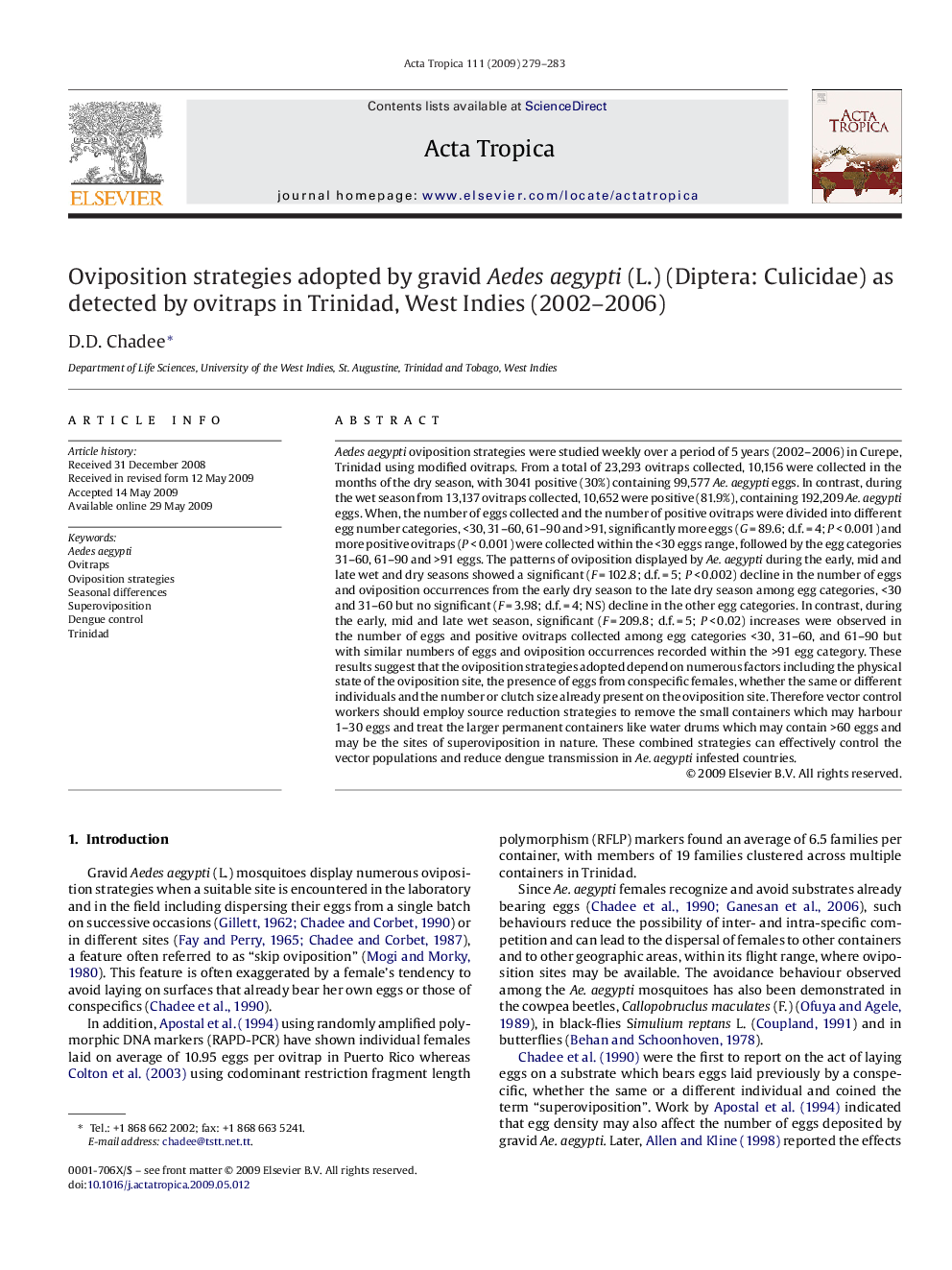| کد مقاله | کد نشریه | سال انتشار | مقاله انگلیسی | نسخه تمام متن |
|---|---|---|---|---|
| 3394088 | 1221444 | 2009 | 5 صفحه PDF | دانلود رایگان |

Aedes aegypti oviposition strategies were studied weekly over a period of 5 years (2002–2006) in Curepe, Trinidad using modified ovitraps. From a total of 23,293 ovitraps collected, 10,156 were collected in the months of the dry season, with 3041 positive (30%) containing 99,577 Ae. aegypti eggs. In contrast, during the wet season from 13,137 ovitraps collected, 10,652 were positive (81.9%), containing 192,209 Ae. aegypti eggs. When, the number of eggs collected and the number of positive ovitraps were divided into different egg number categories, <30, 31–60, 61–90 and >91, significantly more eggs (G = 89.6; d.f. = 4; P < 0.001) and more positive ovitraps (P < 0.001) were collected within the <30 eggs range, followed by the egg categories 31–60, 61–90 and >91 eggs. The patterns of oviposition displayed by Ae. aegypti during the early, mid and late wet and dry seasons showed a significant (F = 102.8; d.f. = 5; P < 0.002) decline in the number of eggs and oviposition occurrences from the early dry season to the late dry season among egg categories, <30 and 31–60 but no significant (F = 3.98; d.f. = 4; NS) decline in the other egg categories. In contrast, during the early, mid and late wet season, significant (F = 209.8; d.f. = 5; P < 0.02) increases were observed in the number of eggs and positive ovitraps collected among egg categories <30, 31–60, and 61–90 but with similar numbers of eggs and oviposition occurrences recorded within the >91 egg category. These results suggest that the oviposition strategies adopted depend on numerous factors including the physical state of the oviposition site, the presence of eggs from conspecific females, whether the same or different individuals and the number or clutch size already present on the oviposition site. Therefore vector control workers should employ source reduction strategies to remove the small containers which may harbour 1–30 eggs and treat the larger permanent containers like water drums which may contain >60 eggs and may be the sites of superoviposition in nature. These combined strategies can effectively control the vector populations and reduce dengue transmission in Ae. aegypti infested countries.
Journal: Acta Tropica - Volume 111, Issue 3, September 2009, Pages 279–283